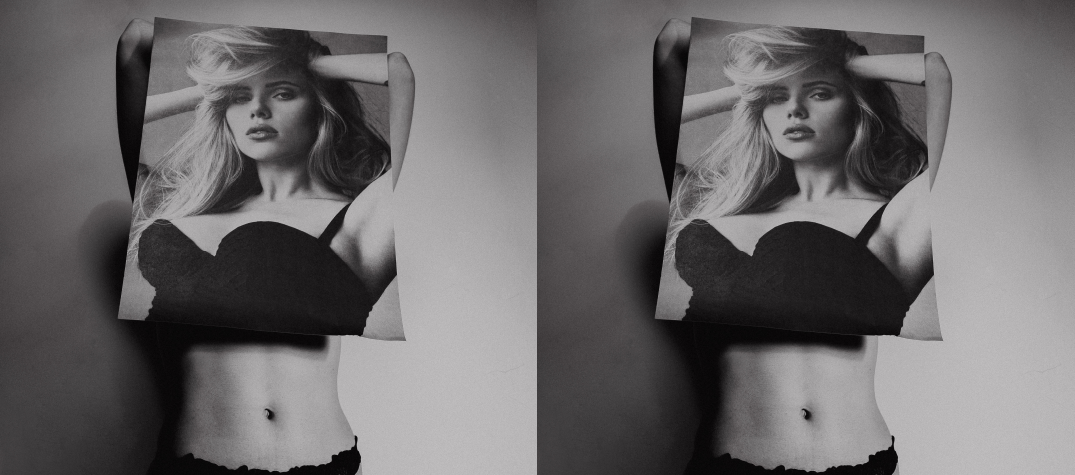When I was 20, I walked into La Senza after cashing in my first real paycheck and experienced my first real heartbreak.
After spending my teens in potato sacks and old sports bras, I had decided to do the adult thing and cover up my insecurities with money. So, there I stood, surrounded by lingerie that exceeded a month’s salary, in a shop filled with endless (expensive) possibilities. I was confident that I was going to walk out looking and feeling like a Victoria’s Secret model.
I suppose the first clue came when the saleswoman (who likely worked on commission) didn’t exactly light up when I told her that I was about to spend ‘a lot of money’. She politely asked to measure my chest before we got shopping. The measuring went on and on and on, before she declared solemnly that I was a 32 F, adding that while they did sell bejewelled boudoirs and feathery thongs, they did not sell bras my size. Or even make them.
Three years later, I was still reeling from my first taste of rejection. Over a lot of cheap gin, I recounted the story to a friend who has been blessed with a small chest.
By then, I had resigned myself to a life of minimisers, awkward bulges, and half-decent bras with price tags to make anyone swoon. I had learned that anything above a C cup was considered an anomaly, not only by bra manufacturers but by the entire fashion industry. All the size ‘M’s that fit me everywhere except my chest, and the high-street brand clothes that looked great on everyone but me suddenly made sense.
I was convinced that women with big boobs had been wronged ever since the bra was first invented. I expected my friend to look at me with sympathy, and maybe even buy me a few pity drinks while she was at it.
Instead, she took a long gulp of gin and said, “At least you don’t have to worry about your date staring at someone else’s cleavage or being disappointed when he finally figures out how to unhook your bra.”
Also read: The Bra Debate: Ladies, You’ve Been Scammed
And with that, I lost the license to victimise myself. I thought about all the times she had been subtly body-shamed by her ex, how she once joked about wearing extra padded bras just so that her grandmother would stop calling her a boy, and how every female sex symbol over the last 50 years had one thing in common – their perfectly perky, in-your-face, chest.
The message has been loud and clear – your sexiness is directly proportional to the size of your chest, and no amount of #bodypositivity posts can really change that. In fact, just as the fashion industry seems to ignore a large chunk of its consumers, the body positivity movement seems to ignore a large chunk of its audience. While a 17-year old version of me jammed to ‘All About That Bass’ and liked posts about how ‘real men liked curves’, 23-year old version of me realised that every rom-com, every likable ‘girl next door’, every risque cover of Sports Illustrated told me that I was desirable (at least until I got stretch marks). And in a world filled with virgins and whores, this meant only one thing – women on the other side of the spectrum were ‘not desirable’.
Really, my friend argued, she needed those lacy, see-through bras to feel sexy. Theoretically, I didn’t.
For every lingerie shop that made me feel bad about the size of my chest, there was a date that made my friend feel bad about hers. As I let go of my oh-so-precious identity as a victim, I realised that while women with big breasts were cast away by the fashion industry, women with smaller breasts were cast away by pop culture.
As long as you have breasts, body image issues come with a guaranteed life-long warranty.
And our boobs, I realised, deserved better.
Even though that night I was too drunk to make it to the light at the end of the tunnel, I’m happy to announce that there is one. In 2018, the Guardian, a publication that once routinely wrote about the bane of being the owners of big breasts, found that mainstream bra manufacturers were beginning to acknowledge breasts of all sizes.
Slowly but surely, lingerie has started focusing on female comfort instead of male desire. Shaming women for their (lack of) chest is more cancelled than cool.
But as I sit here, in an old cotton bra that has been washed out of shape to fit me, finally admitting that I’ve spent the last decade not-so-silently hating women with small chests, I wonder if it’s too little, too late. After also hating myself for my bulges and cleavage, I’ve come to realise that the fault is not in ourselves.
The fault is in our bras.

